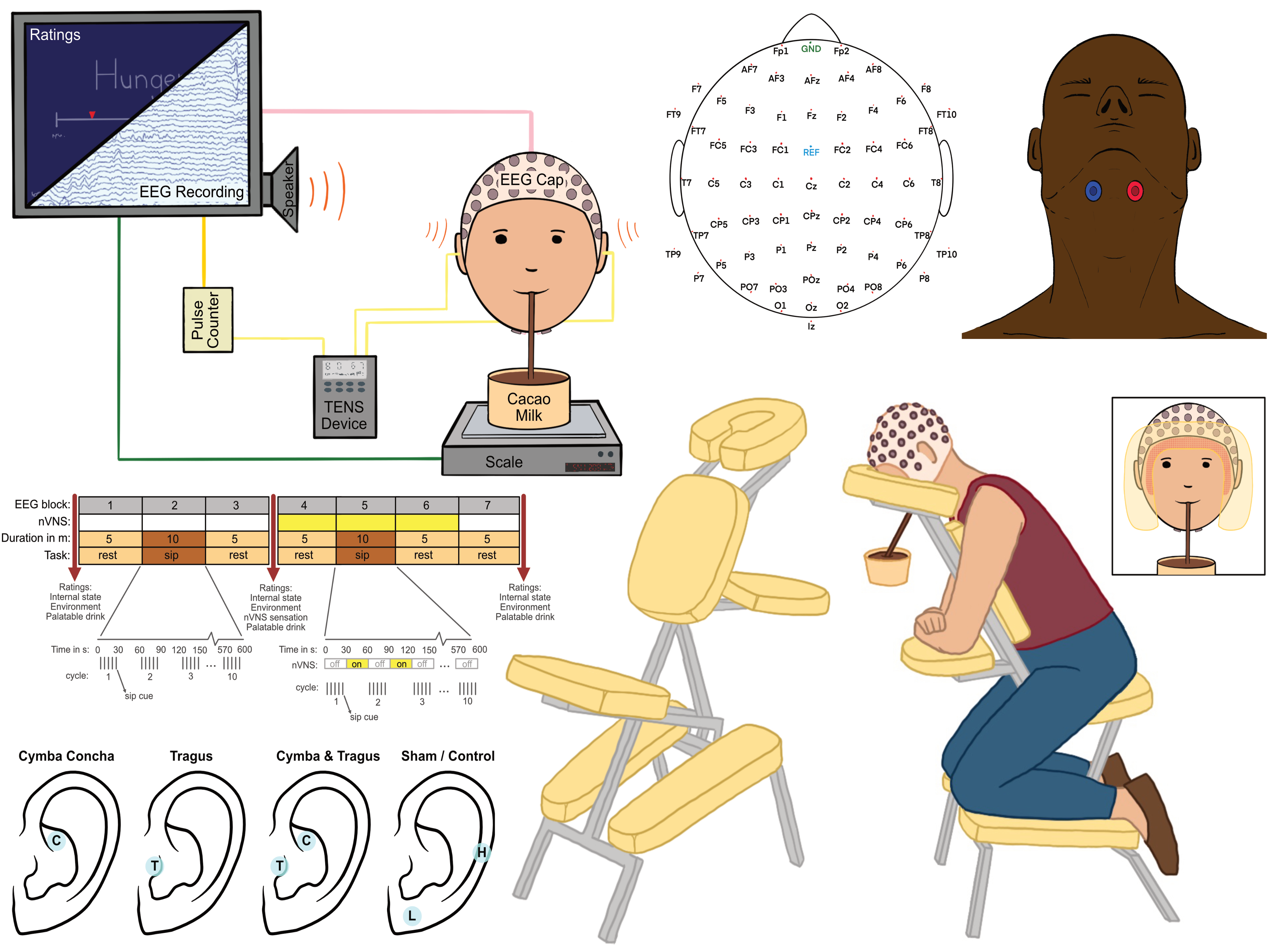Ph.D. Candidate: Samet Albayrak
Program: Cognitive Science
Date: 14.04.2025 / 14:00
Place: A-212
Abstract: Eating behavior is, among many other influences, shaped by flavor preferences and gut-brain signaling. Flavor perception arises from interactions with receptors in the oronasal cavity and after food is swallowed it binds to enteroceptors in the gut. In one model of overeating, the vagus nerve (VN), the main pathway of the gut-brain axis, becomes desensitized toward high caloric foods which then promotes more overeating. This desensitization is hypothesized to be reversible through electrical stimulation of the VN, as invasive VN stimulation (iVNS) in epilepsy patients has been associated with reduced appetite and weight loss. Preliminary results from non-invasive VNS (nVNS) methods have shown to produce a similar outcome, by reducing preferences for a high-fat chocolate pudding, though the mechanisms behind this potential reversal of desensitization remain unclear. This study aims to clarify these mechanisms using transcutaneous VNS (tVNS), parallel behavioral assessments, and a series of EEG recordings during a sip-and-swallow procedure of a palatable chocolate milkshake with fat and sugar. To examine how brain electrophysiology is affected by tVNS, EEG recordings were collected before, during, and after stimulation of the auricular branch of the vagus nerve (ABVN). Additionally, EEG recordings were conducted both during resting states (before, during, and after stimulation) and while sipping chocolate milk (before and during stimulation). Resting-state recordings were compared to assess the effects of tVNS on food reward-related cortical oscillations. Event-related potentials (ERP) time-locked to the moment of swallowing were analyzed to determine how tVNS influences the experience of consumption and the perception of chocolate milk. We also measure electro-myography of the eye-muscles, to detect spontanous eyeblinks, a proxy for dopamine responses. Results did not reveal significant neurophysiological or behavioral findings; however, an effect of food on spontaneous eye-blink rates was observed. Furthermore, a comparison between ERPs synced to swallows with or without food stimuli present showed that ERP waveforms were observed only when a food stimulus was involved, indicating that this EEG sip-and-swallow protocol is suitable for studying flavor perception.
